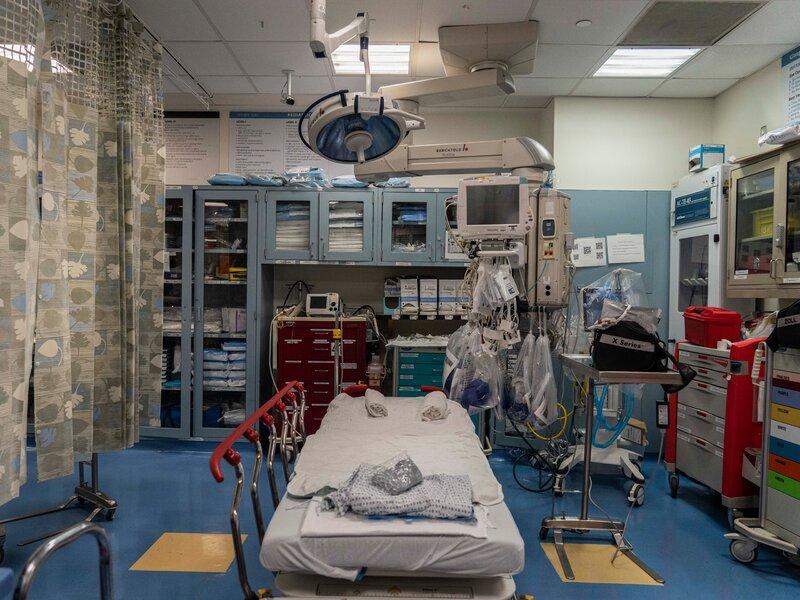
In the hushed hallways of emergency rooms, the well-being of countless children hangs in the balance. Amidst the chaos and urgency, a startling discovery has emerged: one in four child deaths following E.R. visits could have been prevented. Welcome to a journey into the heart of this sobering revelation, as we delve into a study that unveils the sobering gap between what is and what could be in pediatric emergency care.
Disturbing Discovery: A Quarter of Child Deaths Following ER Visits Deemed Preventable
Tragedy in the Emergency Room
The preventable nature of these deaths underscores the importance of ensuring that our emergency rooms are adequately staffed and equipped to provide the best possible care for our children. Timely access to appropriate medical attention can mean the difference between life and death, and it is imperative that we take steps to ensure that all children have access to the care they need.
Possible Contributing Factors to Preventable Child Deaths
Lack of resources: Emergency departments are often understaffed and overwhelmed, which can lead to delays in care and errors in judgment.
Inadequate training: Healthcare professionals may not have the necessary training and experience to properly diagnose and treat children’s medical conditions.
Communication breakdowns: Miscommunication between healthcare providers can lead to delays in care or incorrect treatment plans.
Systemic issues: Complex bureaucratic processes and insurance hurdles can create barriers to timely and appropriate care for children. By addressing these contributing factors, we can work together to improve the quality of care in emergency rooms and prevent the senseless deaths of so many young lives.
Deciphering Root Causes: Unveiling Factors Contributing to Avoidable Pediatric Fatalities in Emergency Settings
Defining Underlying Factors: Exploring Systemic Vulnerabilities
The study delved into various factors that contributed to preventable deaths, uncovering underlying systemic failures. These included inadequate communication and coordination, with healthcare providers struggling to relay critical information effectively. Moreover, overcrowding and resource shortages posed challenges in timely and appropriate interventions.
Unveiling Latent Barriers: Addressing Systemic Inefficiencies
Probing deeper, the research identified latent barriers that perpetuated unsafe practices. These included lack of standardized protocols and training deficiencies, leading to variations in care delivery. Cultural and linguistic barriers further hindered communication and comprehension, exacerbating patient safety risks. Additionally, the study revealed inadequate staffing levels and burnout among healthcare workers, compromising their ability to provide optimal care. 22
Tackling the Challenge: Recommendations for Enhancing Patient Safety and Preventing Loss
Addressing the Crisis: Imperative Measures for Enhancing Patient Safety
To effectively address this alarming issue, healthcare institutions must prioritize the implementation of comprehensive strategies that focus on:
Advancing Patient Engagement: Empowering patients and their families to be actively involved in their care decision-making, ensuring open communication, and providing clear and accessible health information can improve patient adherence to treatment plans and self-management strategies.
Strengthening Healthcare Systems Resilience: Implementing robust quality and performance improvement initiatives, enhancing staff training and education, and integrating advanced technologies can strengthen healthcare systems and minimize the risk of errors and preventable adverse events.
Wrapping Up
In the tapestry of life, where the threads of health and vulnerability intertwine, this study sheds light on the sobering crossroads of pediatric emergency care. While the journey through the hallowed halls of our hospitals may offer solace to families in their moment of need, the findings presented here serve as a gentle reminder that even within the confines of our best efforts, there remains an unyielding need for vigilance and improvement.
As we navigate the complexities of child health and strive for a future where every precious life is valued, let us draw strength from the insights gained through this research. Together, let us weave a stronger safety net, one that will cradle our most vulnerable and ensure that every young heart that enters our emergency rooms beats stronger with the promise of a brighter tomorrow.



